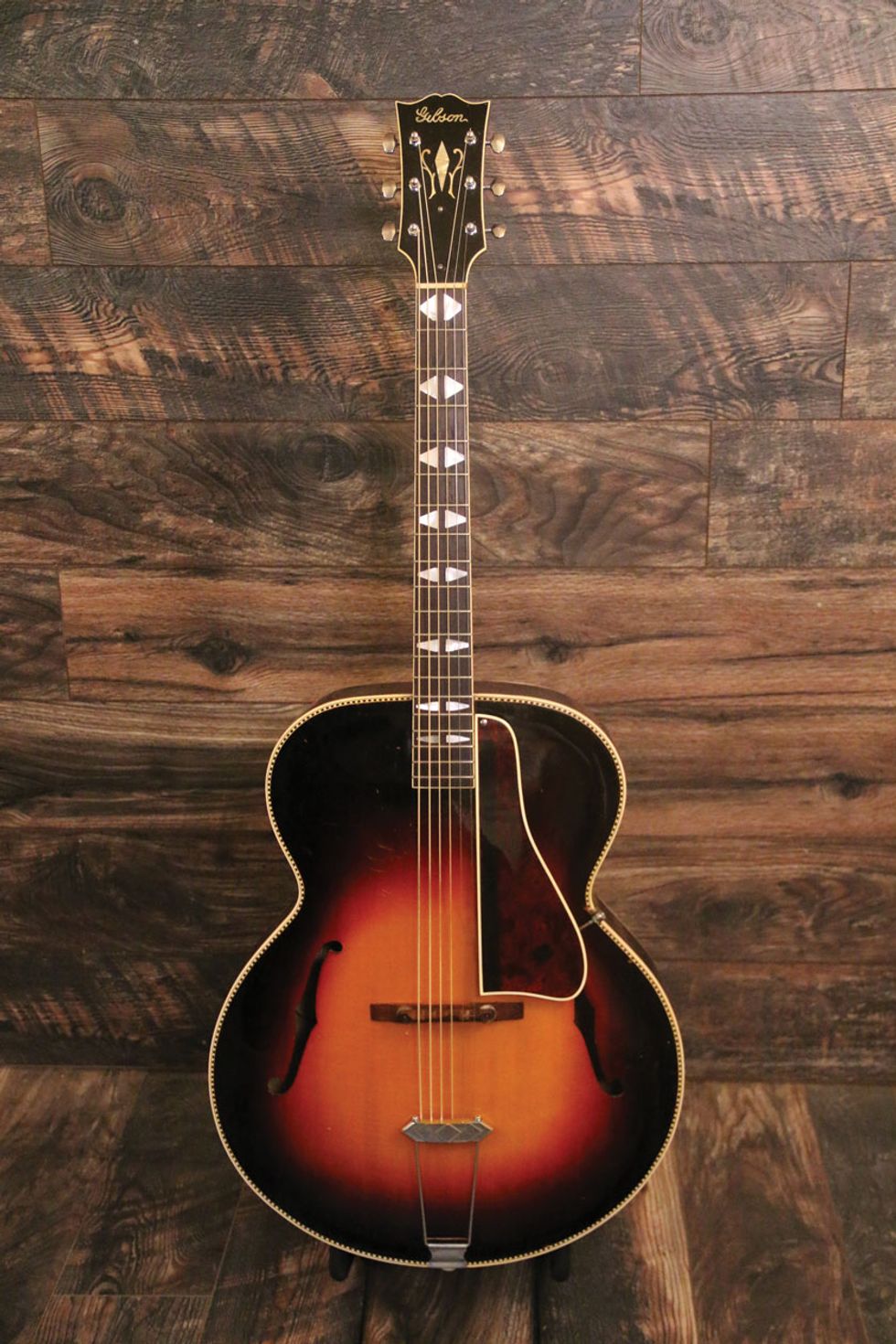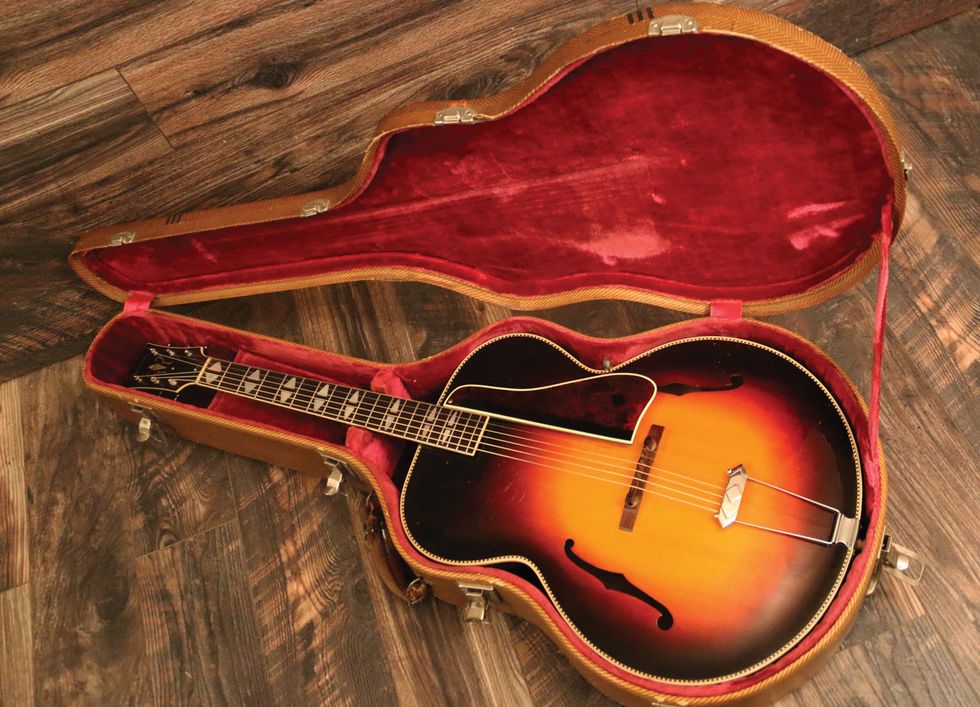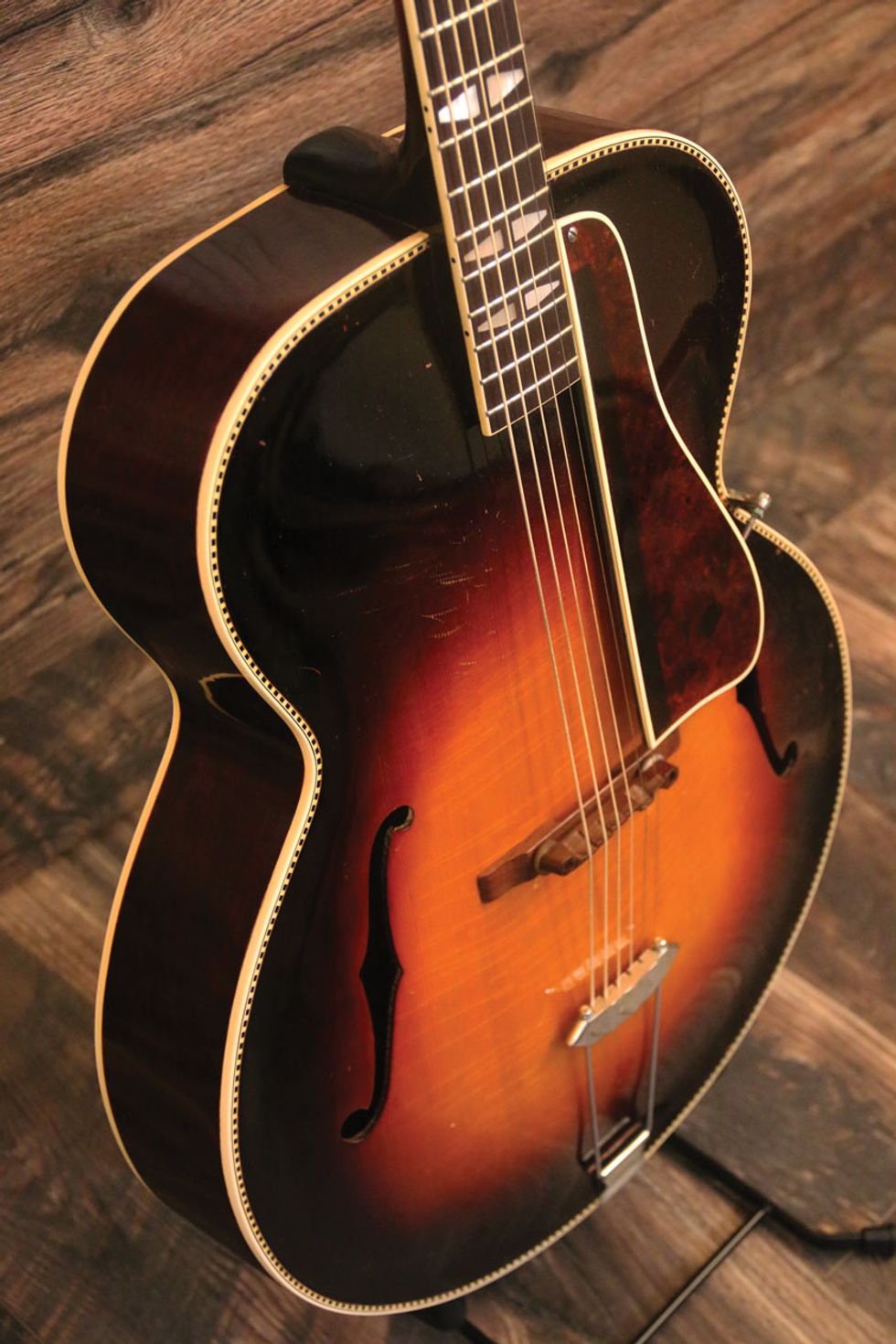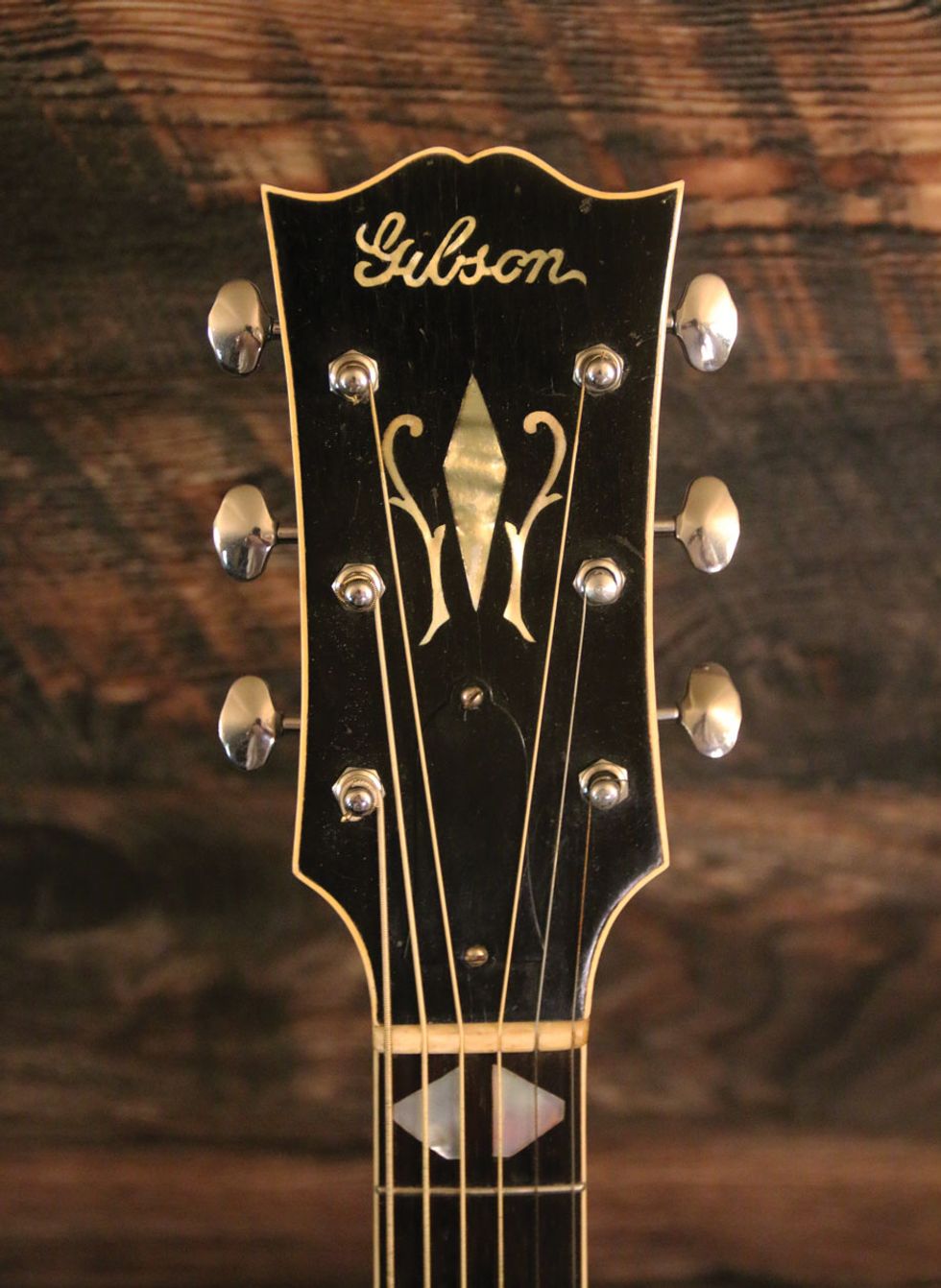It’s interesting when a guitar shows up at about the same time there seems to be a new love for that particular style of 6-string. This 1937 Gibson L-10 archtop came on my radar almost parallel to PBS airing Ken Burns’ documentary series Country Music. The L-10 isn’t as popular as the L-5, which is associated with the famous designer Lloyd Loar, or the L-7, but is just as high-quality a guitar. While “Mother” Maybelle Carter was known for her Gibson L-5, other players including Chet Atkins, Merle Travis, and Bob Wills and His Texas Playboys’ guitarist Eldon Shamblin proudly played their Gibson L-10s. With a beautiful headstock and fretboard inlays, these are amazing-looking instruments.
Improbably, this guitar’s case is also in very good condition, with its push lining, tweed covering, and black-striped top.
When Gibson introduced the L-10 on its price list in 1931, it was designed to be a lower-cost version of the L-5, available only in black and selling for $175, which was $100 cheaper than the L-5. Apparently the company had been working on the model for several years before its debut, likely as a result of slowing sales of mandolins and banjos as the craze for those instruments faded. From 1928 on, Gibson started featuring more guitars in their catalog, with flattop models coming into vogue and archtops surging in popularity. When competitor Epiphone introduced seven F-hole archtop-style guitars by 1931 under the name Masterbilt, Gibson knew they had to be committed to the new era of the guitar’s popularity.
The first L-10s were, of course, less ornate than the L-5. But the L-10’s build—despite its less glamourous black finish and plainer appointments—made it just as good-sounding and dependable as its more costly sibling. Soon, ornamentation on Gibson guitars stated expanding, eventually culminating in beauties like the Super 400. But this 1937 Gibson L-10, to me, has all the right appointments and looks superb! This would be a great find for someone who wants the L-5 sound and appearance, without the heftier price tag. Believe me, vintage L-10s are still pricey—around $5,000—but compared to an L-5, they’re a good catch. A 1935 L-5 at Carter Vintage Guitars in Nashville recently sold for $8,500.
There are some discernable scratch marks from strumming on the guitar’s arched top, more recent tuners, and a replacement pickguard—as well as the original in its case—but this L-10 is otherwise stock right down to its adjustable ebony bridge.
This month’s guitar is in great shape, with its original case. The pickguard has been replaced, but the original is still with the guitar, taken off and undamaged. I think this is a great year for this model because by 1934/’35, Gibson had upped the body width from 16" to 17" on archtops. Gibson even went further on the L-10s by changing the top bracing to an X pattern, switching to double-bullet inlays on the fretboard, with a Florentine-and-diamond headstock inlay, and checkerboard binding on the top as well as a sunburst finish with dark red mahogany stain for the sides and back. All that makes this guitar just as beautiful as the L-5. In terms of playability, they are interchangeable.
The headstock proudly displays its vintage logo lettering, a Florentine-and-diamond inlay, and replacement butterbean-style tuners.
Gibson discontinued the L-10 in 1939. By then, there were too many models available in a saturated market that was changing with musical trends. Today, this guitar would be a jewel in any collection, and not just for its looks, but as a player’s instrument with a wonderful rich tone. Among those with a love of the musical styles of the late 1920s and 1930s, which have become popular again, this L-10 is highly coveted—and for good reason.











![Rig Rundown: Russian Circles’ Mike Sullivan [2025]](https://www.premierguitar.com/media-library/youtube.jpg?id=62303631&width=1245&height=700&quality=70&coordinates=0%2C0%2C0%2C0)

















